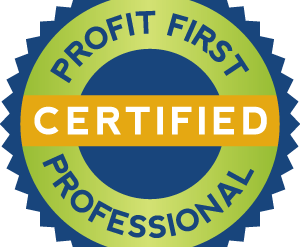The Profit First concept is a financial management approach for businesses that prioritises profitability and promotes financial health from the very start. Created by Mike Michalowicz, it challenges the traditional approach of calculating profit as whatever remains after expenses are paid. Instead, Profit First encourages business owners to reverse this formula, ensuring that profit is a non-negotiable part of their business operations. Here’s how it works and why it’s transformative:
1. Reversing the Profit Formula
- Traditionally, the formula for business profit is:
Sales – Expenses = Profit - In Profit First, this formula is flipped:
Sales – Profit = Expenses
This change is crucial because it shifts the focus to making profit a priority. By subtracting profit first, the business is forced to operate within the remaining funds for expenses. This method helps ensure that every dollar generated is used intentionally, with profitability as a top priority rather than an afterthought.
2. Setting Up Multiple Bank Accounts
- Profit First suggests setting up separate bank accounts to allocate funds for specific purposes. This creates a physical, visual representation of how money is divided, making it harder to spend funds set aside for profit or taxes.
- A basic setup might include the following accounts:
- Income: Where all deposits from sales go initially.
- Profit: A portion of income is transferred here immediately to ensure profit.
- Owner’s Pay: The amount set aside as the owner’s compensation.
- Tax: A percentage set aside for tax obligations, reducing surprises at tax time.
- Operating Expenses: The remaining funds go here, covering costs of running the business.
By “banking on purpose,” business owners have better control over where their money goes, and the physical separation of funds curbs the temptation to overspend.
3. Allocating Money with Target Percentages
- Profit First uses a system of Target Allocation Percentages (TAPs), which represent ideal percentages of income allocated to each category (Profit, Owner’s Pay, Tax, and Operating Expenses). Over time, the goal is to increase the percentage dedicated to profit.
- For example, a business might start with these TAPs:
- Profit: 5%
- Owner’s Pay: 50%
- Tax: 15%
- Operating Expenses: 30%
- Initially, businesses might start small, dedicating even 1-2% to profit. The goal is to create consistent profitability and gradually increase the TAPs as financial habits improve.
4. The Power of Small Steps
- Profit First advocates starting with small, manageable changes. By allocating even a small percentage to profit right away, the business establishes a routine of prioritising profitability.
- This approach is especially helpful for businesses that struggle with cash flow because it encourages financial discipline and sustainable spending habits.
5. Establishing a Regular Allocation Schedule
- To make Profit First effective, business owners should establish a regular schedule for allocating funds (e.g., bi-weekly or monthly). This process, called “allocation day,” involves reviewing income and distributing it across the designated accounts based on TAPs.
- Consistent allocation and reviewing of funds reinforce the habit of prioritising profit, making it part of regular operations rather than an end-of-year event.
Benefits of Profit First
- Financial Clarity and Control: By separating money into specific accounts, business owners gain a clear understanding of available funds and are less likely to overspend.
- Improved Cash Flow: Setting aside funds for taxes, profit, and owner compensation in advance helps reduce end-of-year surprises and keeps cash flow stable.
- Built-In Profitability: Profit First makes profitability a priority from the beginning, reducing reliance on external funding or credit.
- Sustainable Growth: Profit First discourages overspending on expenses, promoting a leaner, more sustainable approach to growth.
Why Profit First is Effective
The Profit First system enforces financial discipline, which is often one of the biggest challenges for small business owners. By making profit a habit rather than an afterthought, it encourages mindful spending, helps prevent cash flow crises, and allows business owners to see real financial rewards for their hard work. It’s a method that doesn’t just improve the numbers—it transforms the way owners think about money in their business.
To learn more about how the Profit First system can work for your business, call the team at East Partners.



